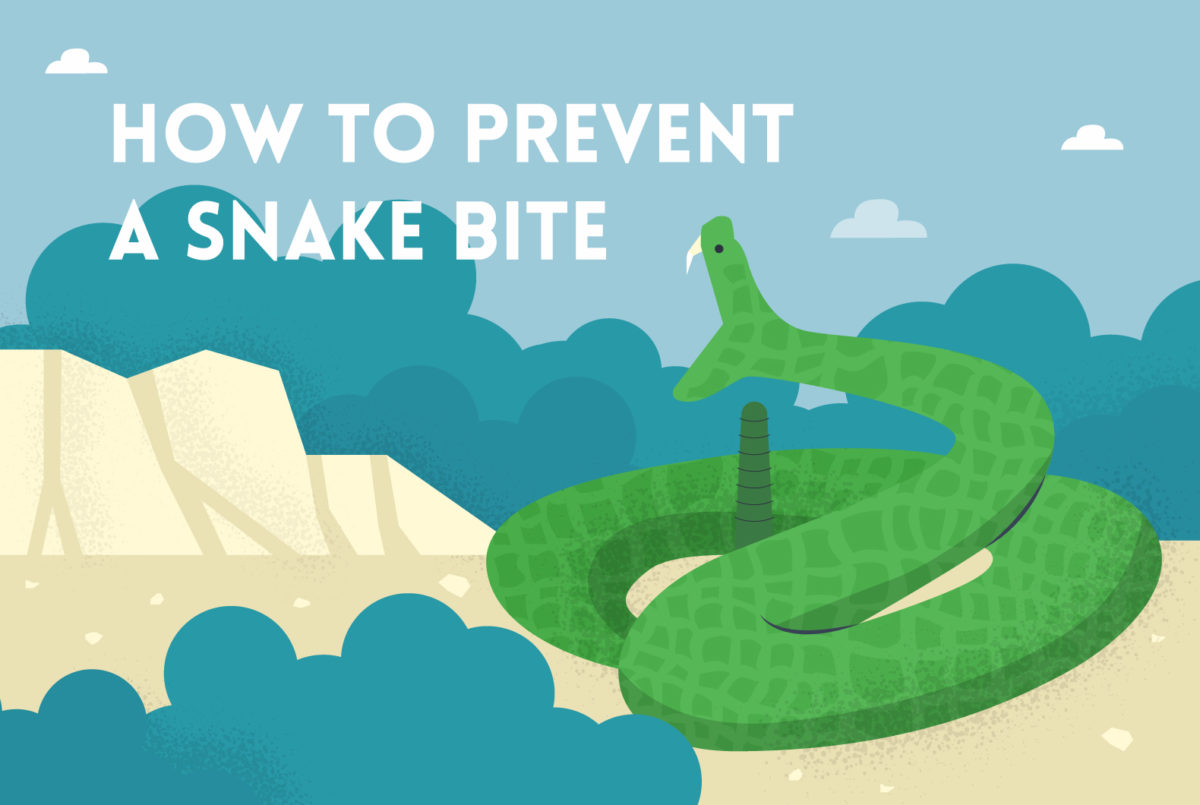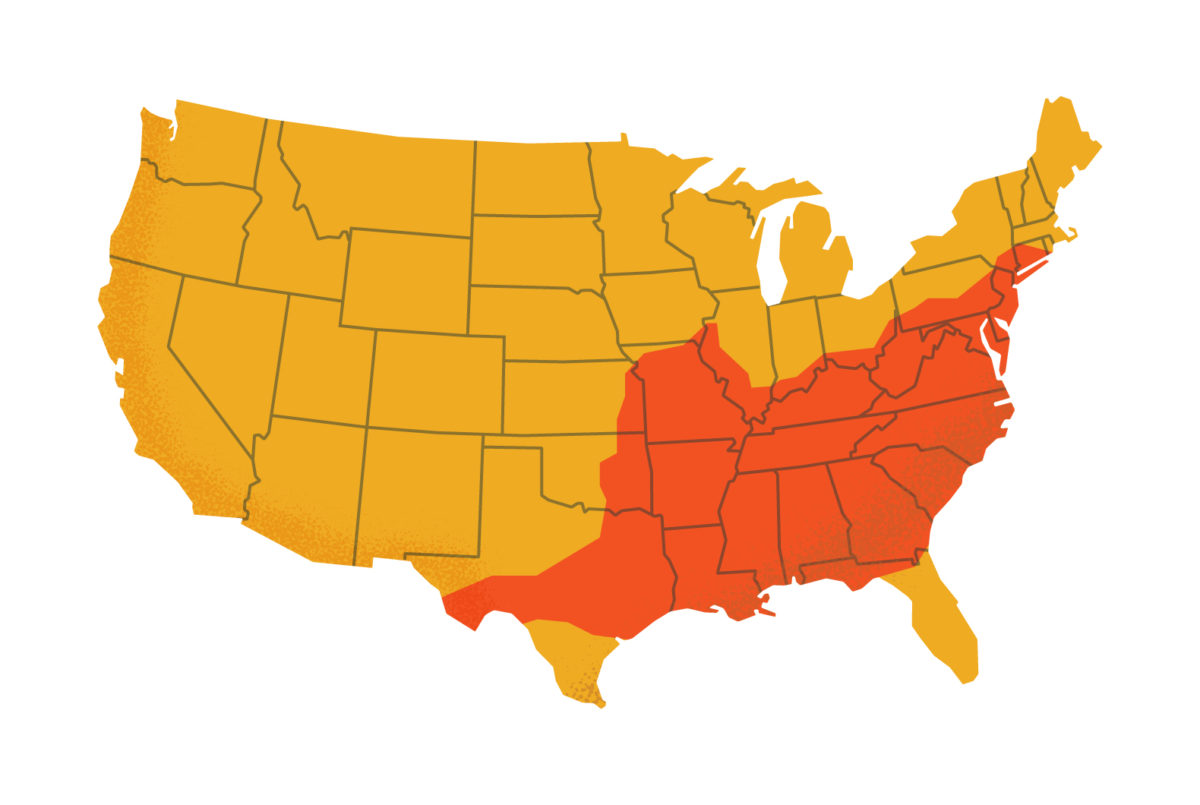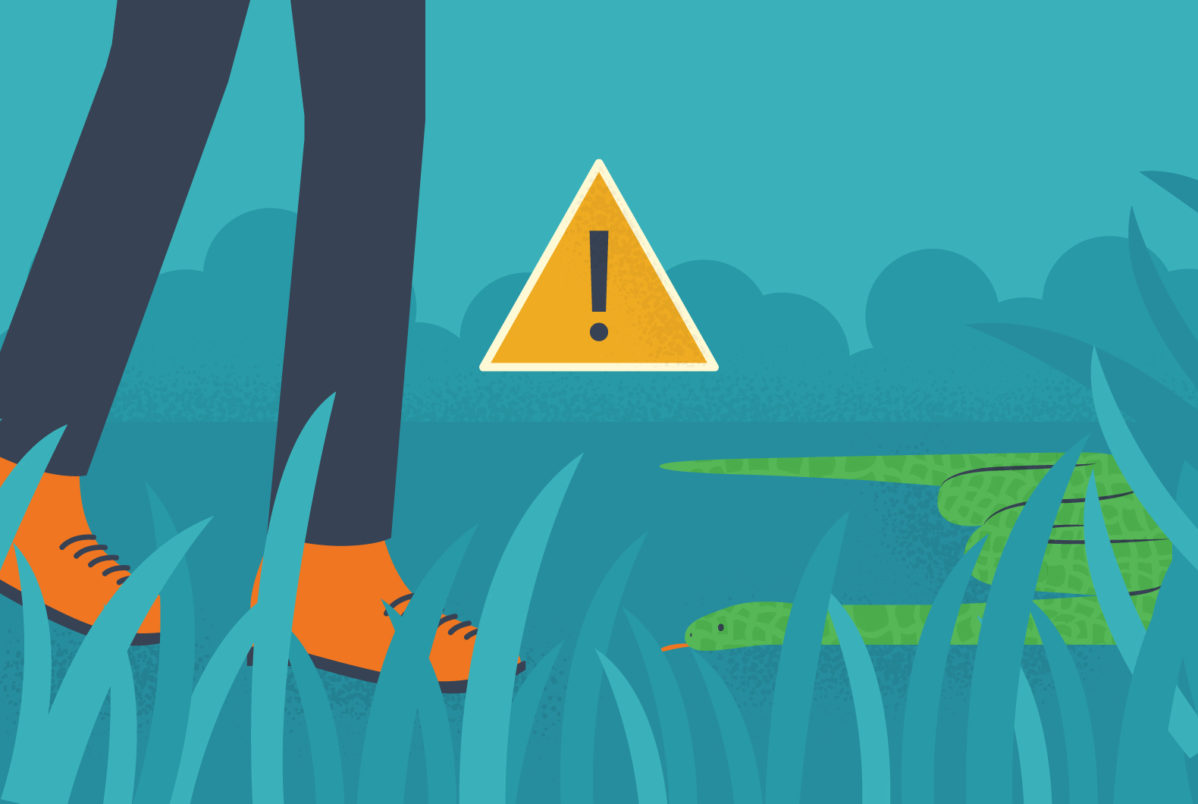

This article was written by Connor, one of our founding editors. Connor is a full-time travel and lifestyle photographer with extensive experience in the outdoors industry.
So far, we have talked about the different types of venomous snakes you’ll find in North America and how to avoid them. Learning how to identify each snake and deciding whether it’s a threat or not, will go some way to helping you to avoid a nasty nip.
You’ll also have learned their behavior and habitat, so you should know when to look out for one and what it’s likely to act like if you come across it. In this section, we’re going to cover the best ways you can actually prevent a snake bite, before teaching you how to treat one.
Hopefully, if you read this section, you’ll not need to read the ‘How to Treat a Snake Bite’ section!

The first thing you should be aware of when you’re heading out, especially to an unfamiliar area, is understanding if it’s an area likely home to venomous snakes. Of course, snakes can travel and be found in unusual places, however, like the rest of us, they’re creatures of habit and will usually be found in their normal habitat.
We’re going to run by the habitat of each venomous snake.
They will normally be located in the southern coastal regions of North America, from North Carolina to Louisiana and Florida. You will also find sub-species of the coral snake in Texas, Arkansas, Oklahoma, central and southern Arizona, and southwestern New Mexico.
Typically, they will be found in pine and scrub oak sandhill habitats as well as hardwood and flatwoods when there is seasonal flooding. The Arizona coral snake can be found in a variety of habitats, such as desert-scrub, woodland, farmland, grassland, and thorn-scrub.
This is a semi-aquatic snake, therefore you will usually spot this creature in areas of water like swamps, marshes, rivers, ponds, and lakes. The cottonmouth snake lives in the southeastern parts of North America in southern Virginia, Florida, and eastern Texas.
If they’re not in the water, they’ll be found next to it or also in fields. Due to the fact they are cold-blooded, they like to soak up the sun to raise their overall body temperature.
The copperhead has a large range and found in the following states: Alabama, Arkansas, Connecticut, Delaware, Florida, Georgia, Illinois, Indiana, Iowa, Kansas, Kentucky, Louisiana, Ohio, Oklahoma, Maryland, Massachusetts, Mississippi, Missouri, Nebraska, New Jersey, New York, North Carolina, Pennsylvania, South Carolina, Tennessee, Texas, Virginia, and West Virginia.
Largely, the copperhead prefers forest and woodland areas. However, it is also home to a variety of habitats. It is not uncommon to see this snake in swamp areas and on rocks and ledges.
Rattlesnakes will be found in a variety of habitats, such as grasslands, scrub bush and rocky hillsides. You may also often spot one in open spaces. Rocks help them cover from threats and offer them plenty of food from small insects to lizards. They are mostly found in Texas and Arizona.

Tall grass gives snakes the perfect opportunity to hide from threats and find food but this can make it incredibly hard for you to spot one, as you may not be able to see the ground clearly.
It is important that you try to stay on the defined path as it is less likely a snake will be lurking there. If you absolutely have to go in the tall grass, take a stick and prod the area you’re about to step on as a ‘snake check’. A large percentage of snake bites are caused by human error i.e. stepping on or near a venomous snake.
Snakes like to hide, especially under rocks or fallen logs. Be careful not to go carelessly stepping near rocky areas or next to logs without either avoiding the area or checking first.
They tend to hang around dark areas as well, so make sure you double-check and shine a torch if you must. It can be too easy to forget and place your hand down next to a snake without look so try to be mindful of your surroundings.
Snakes are notorious for climbing trees so don’t disregard that. Obviously, the first thing to be wary of is if you’re climbing trees. Secondly, watch out for any low branches. Snakes do a good job of blending in and many of them are brown/dark color.
This goes without saying really, but for those of you out there tempted to handle a snake, our recommendation is that you don’t unless you really really know what you’re doing. Most snakebites occur because the snake has been provoked. This means you significantly increase your chances of being bitten if you attempt to handle a snake.
Furthermore, snakes can strike from some distance, so avoid touching a snake with a stick as it is likely they will still be able to reach you if you can reach them. Did you know that snakes can bite if they have recently been killed? It’s more of a ‘reflexive’ bite than an attack, but it can still be pretty nasty.
Like we mentioned before, many venomous snake bites occur due to people accidentally standing on or near them. It’s advisable you invest in a thick pair of walking boots so that if a snake goes to bite, your feet and ankles are at least protected.
It is worth looking for a pair of snake bite pants or snake bite boots/snake-proof hiking boots for added protection. Snake gaiters are also an excellent option here, so do some research into this. Your pants should remain loose and long for two reasons; a snake is likely to bit lose material and miss your leg.
If you’re camping, you should try to think about the above points and pick an area that isn’t near lying logs or rocks. If you’re near water, you’ll need to watch out for the cottonmouth as this is its favorite habit, due to the fact it’s semi-aquatic.
Keep your tent zipped up at all times, even when you’re not in it. The last thing you want to return to after a hike is a snake lurking in your sleeping bag. It’s also important to remember to keep items like shoes inside the tent so that snakes don’t hide in them.
There are a few things you can do at home to protect you and your kids from being bitten by a snake. Firstly, try to keep your grass short all year round as snakes like to hide in the long grass.
Also, if your grass is short, it will be much easier to spot one slithering across the lawn. You should be aware of where your children are playing. Do you keep any log stores? Is there a shade/rocky area? Keeping these questions in mind may help to prevent a nasty accident.